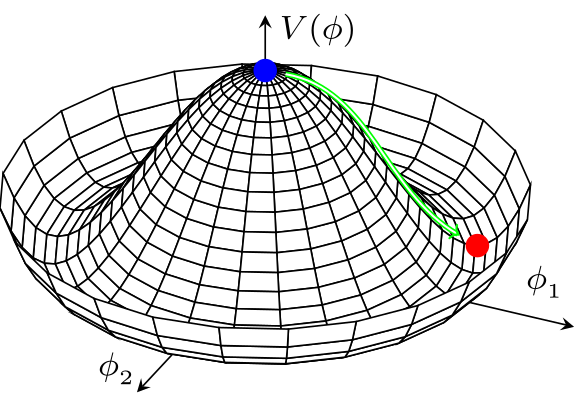Dynamical critical phenomena

The high-energy nuclear collisions create a fireball of hot and dense QCD matter with restored chiral symmetry. As the fireball expands and cools, the QCD matter transits a chiral cross-over, which becomes a second-order phase transition in the limit of massless quarks. Lattice QCD calculations show that the quark-gluon plasma goes through a smooth crossover transition at T = 156.5 MeV. Similar temperature is obtained phenomenologically by thermal model fits to the produced yields of hadrons and light nuclei. Current experimental evidence for the chiral transition dynamics is limited, but there are hints, e.g., from the yields of soft pions (the Goldstone bosons of the transition) which do not fit well with current hydrodynamic models.
To look for new observables of chiral dynamics, we study the real-time evolution of an O(4)-symmetric relativistic scalar field theory. This theory belongs to the dynamic universality class of Model G, making it a suitable proxy for studying chiral transition dynamics. Lattice QCD studies indicate that many of the trends for static chiral observables, such as fluctuations of the chiral condensate, in the crossover region can be understood using static O(4) critical scaling, even for the quark mass values occurring in nature. Universal quantities, such as scaling exponents, can be accurately described within classical Langevin simulations of O(4) theory. Although the relevant Langevin equations that determine the real-time evolution were established a long time ago, the computational resources were not sufficient to motivate their full exploration at the time. We perform a detailed numerical and analytical study of the out-of-equilibrium dynamics of Model G by studying quenches of the system from the high temperature, unbroken phase to the broken phase. In addition, we explore the role of quantum fluctuations within the O(4) symmetric linear sigma model using the self- consistently resummed large-N expansion to next-to-leading order. This can be efficiently formulated in terms of the two-particle irreducible (2PI) quantum effective action. By comparing results from our quantum field-theoretical approach with classical Langevin simulations, we investigate the impact of quantum fluctuations on the non-equilibrium chiral dynamics.